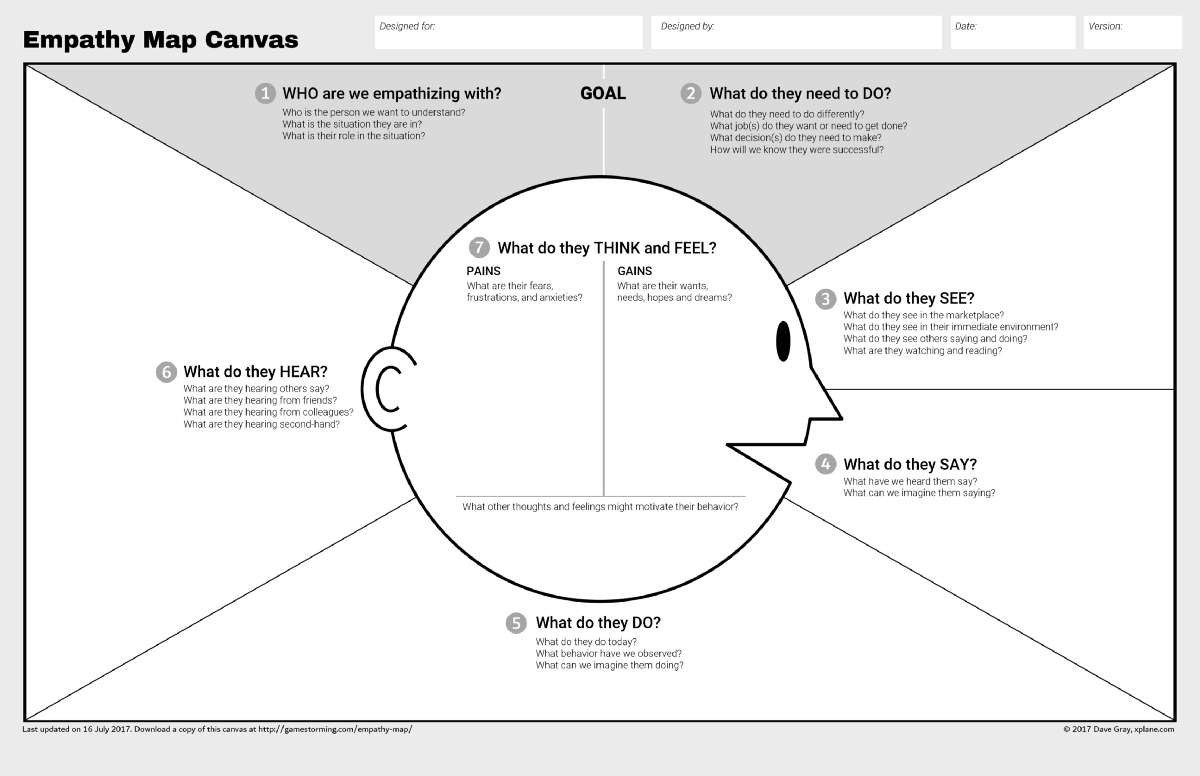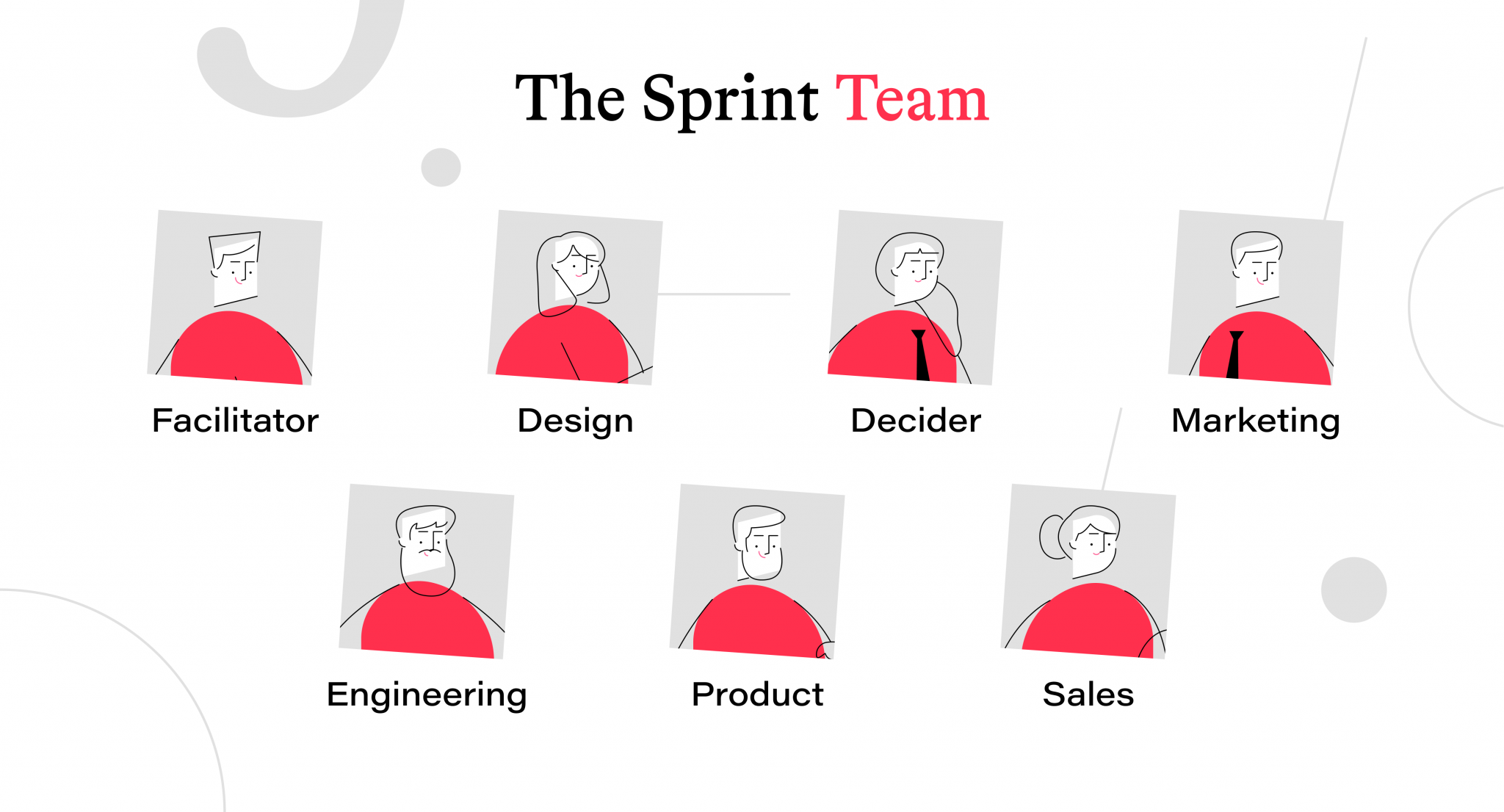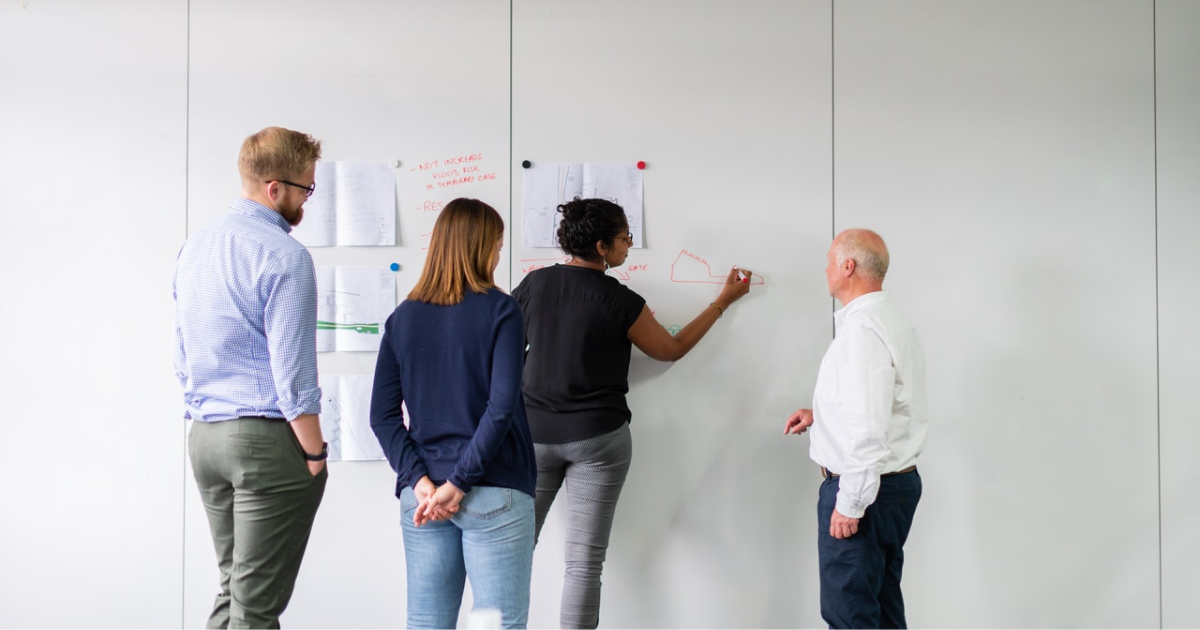The most common reason that start-ups fail is a lack of product-market fit. At the same time, the most common reason IT projects run over budget is unclear objectives and a lack of focus. These problems boil down to a lack of research and communication—and product development workshops are the best way to improve them.
Let's look at the different product development workshops and how you can streamline the development process.
Product development workshops are an excellent way to build a clear roadmap and align your team behind a common goal.
What Are Product Development Workshops?
Product development workshops provide a framework to help you design, prototype, and test the viability of an idea, product, or feature. Google Ventures combines these workshops into a 5-day Design Sprint, but you can also pick and choose specific workshops to meet your needs. The secret to success is structured meetings with specific objectives.

Empathy Map Canvas - Source: UX Booth
The most popular workshops include:
Discovery Workshops involve gathering information about the customer and their problem. For example, you might review user interviews and define the critical customer path before embarking on a new project.
Design Workshops involve developing potential solutions to those problems. For instance, you might storyboard customer scenarios or use an empathy map to understand their state of mind before writing user stories.
Prototype Workshops involve building prototypes to test assumptions and validate ideas. For example, you might use InVision or HTML/CSS to create testable concepts quickly to get feedback before starting development.
The exact structure of these workshops depends on your requirements. For example, Google Ventures provides a specific set of time-boxed activities and deliverables for each workshop, and it has been time-tested across many organizations. The Product Design Workshop is another example of a template for running these kinds of meetings.
You can even develop your own customized product development workshops that specify specific goals, deliverables, and participants. Here’s how:
Decide on a goal. The first step is deciding on a goal. For example, you might want to better understand business needs before starting a project or define technical requirements before the start of a sprint.
Define the deliverables. The next step is defining the deliverables. For example, you might want to complete a Customer Journey Map or spec out a Minimum Viable Product by the end of the workshop.
Choose the participants. Determine the different roles that may have relevant input and invite them to the meeting. Depending on the goal and deliverables, those team members might include developers, designers, stakeholders, or marketing teams.
Establish an agenda and timeframe. You may want to time-box various activities to ensure success. For example, you might allocate a day to spec out a MVP and divide sessions into 10 to 20 minute meetings to avoid burnout.
Prepare for the workshop. Book a conference room, collect materials, invite participants, and prepare for the workshop. If you’re running the workshop remotely, ensure that the right tools are set up and everyone is invited.
It helps to look at existing product development workshops for ideas that can help you determine the best activities, time-box those activities, and define the deliverables that will make the most significant impact. In particular, Google Ventures’ Product Design Sprint is an excellent resource that defines different activities and timelines.
Assembling the Right Team
Product development workshops usually involve four to eight team members. If you have too many people, it becomes difficult to reach a consensus. If you have too few people, you may be limiting the number of possible solutions to a problem. Four to eight team members tends to be a sweet spot that yields many ideas without indecision.

Examples of Potential Team Members
The most important roles include:
Facilitators lead the workshops and ensure that everything runs smoothly. For example, they may be responsible for introducing each stage and time-boxing activity.
Recorders take notes throughout the process and document everything. These notes provide essential artifacts to support development after the workshops are complete.
Product Owners are ultimately responsible for making the final decisions. Frequently, these are product managers or entrepreneurs that had the original vision.
The team should have access to a large enough room with a whiteboard and sticky notes. In addition, the facilitator should gather all relevant customer or competitor research, software design tools, and other information needed to complete the workshop. Again, the exact requirements vary depending on the workshop that you run.
Bringing Together Remote Teams
The COVID-19 pandemic accelerated the trend toward remote work while other teams are dispersed throughout the U.S. or around the world. While product development workshops work best in person, modern communication tools have greatly improved the process for remote teams—as long as everyone has fast internet speeds!

Example of MURAL's Capabilities - Source: MURAL
The most popular remote-friendly tools include:
Organizations that outsource development may have additional challenges to overcome. For example, there may be significant time differences if team members are spread out across the U.S. or around the world.
Strategic Timing and Frequency
Many organizations use product development workshops at the onset of a project, but they are invaluable at every stage. At the same time, many organizations forget that product development workshops can be helpful for more than just ideation. For example, you can prototype user stories or get everyone on the same page with a new feature.
Consider using a product development workshop when:
You're expanding into a new market.
You're developing a significant new feature.
You're experiencing an increase in customer churn.
You have a new stakeholder on the team.
You can also hold product development workshops quarterly or annually to ensure that development is on the right track. For example, you may not recognize changing customer requirements or attitudes toward competitors in some cases unless you take a deep dive into the product and market with a regular workshop.
The Bottom Line
Product development workshops are an excellent way to build a clear product roadmap and align your team with a common goal. By reducing uncertainties and miscommunication, you can maximize the chances of reaching product-market fit and minimize budget overruns. You can even run product development workshops remotely using a variety of tools.
If you're new to product development workshops or want an outside set of eyes on a project, Intent can guide you through the process. Contact us for a free consultation today.

Greg Cargopoulos
Marketing Lead

